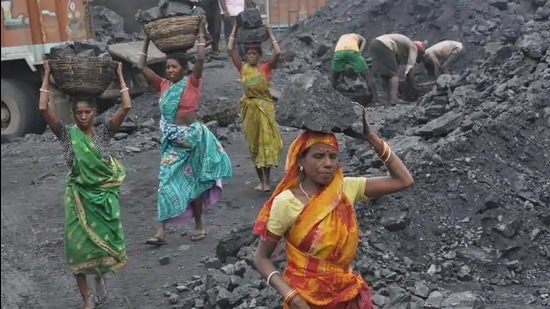Enhancing women’s employment is key to economic recovery
Recovery efforts cannot be gender-blind, because, as the saying goes, “gender-blind is not gender-neutral.” There are four areas where government policy can help ameliorate long-standing issues.
In 2019, before the Covid-19 pandemic, female labour force participation in India and South Asia was 20.5% and 23.5%, respectively (ILO estimates, World Bank database). Comparable estimates for males were 76% and 77%, respectively. The Middle East and North Africa are the only regions with lower female participation than South Asia.

The pandemic has made this situation worse. It has hit women disproportionately — because they work in sectors that have been the hardest hit; work more than men do in the informal economy; or because they are the primary caregivers at home.
Owing to Covid-19, global female employment is 19% more at risk than male employment (ILO estimates). For India, economist Ashwini Deshpande estimates that compared to men, women were 9.5% less likely to be employed in August 2020 compared to August 2019. Ominously, girls are at greater risk of losing their human capital — in India, there is a 30% increase in new registrations on matrimonial websites, and, in South Asia, an additional 200,000 girls are expected to be forced into child marriages this year (Lancet).
Recovery efforts cannot be gender-blind, because, as the saying goes, “gender-blind is not gender-neutral.” There are four areas where government policy can help ameliorate long-standing issues.
First, address child care-related issues, a critical barrier to women’s labour force participation. The biggest dividends will come from focusing on women in the informal sector. In India, Nepal, Bangladesh and Pakistan, 76, 89, 71 and 66% of working women, respectively, are employed on own account or as family workers (ILO). The Integrated Child Development Scheme provides some support, but it is not a full-time child care solution. The “Sangini Centres” of Self Employed Women’s Association (SEWA) provide full-day child care for 0-5 year olds, including nutrition, health and child care. Women using these centres report a monthly income increase of between ₹500-1,000. Similar centres will have to be significantly expanded. As for the formal sector, governments can mandate paternity leave on a use-it-or-lose-it basis, as one way to get men to share in infant care duties.
Second, tackle the digital divide. In India in 2019, internet users were 67% male and 33% female, and this gap is even bigger in rural areas. This divide can become a barrier for women to access critical education, health and financial services, or to achieve success in activities or sectors that are becoming more digitised. To address this, partnerships between the public and private sectors will be most effective. Actions will need to address affordability of phones and computers, female digital literacy and its social context and inadequate technical content dedicated to women and girls.
Third, in the formal sector, use the income tax system to push female labour force participation. Women have a higher elasticity of labour supply than men (their labour supply is more responsive to their take-home wages) — lower income taxes for women can incentivise their participation. In India, given the abysmally low rate of female participation, such a move will not have a significant impact on public finances. This can be compensated with a much smaller tax increase on male employees, if needed. This could help create incentives for female employment within households.
Fourth, mainstream gender-disaggregated data collection and monitoring. What is measured gets acted upon. Globally, major gaps in gendered data and the lack of trend data make it hard to monitor progress. A UN Women Initiative called “Making Every Woman and Girl Count” was launched in 2016 to help prioritise gender data, ensure regular production of quality and comparable gender statistics, and ensure that data are accessible and used to inform policy. In India, too, significant gaps in data on the girl child prevent a systematic longitudinal assessment of the lives of girls. This needs to be corrected.
The best way to “not waste the crisis” is to ensure that women come back stronger. Women in India and other parts of South Asia can become a critical part of the recovery.
Sanjay Kathuria is senior visiting fellow, Centre for Policy Research and adjunct professor, Georgetown University.
The views expressed are personal



